30 Years Ago: STS-65, the Second International Microgravity Lab Mission
On July 8, 1994, space shuttle Columbia took to the skies on its 17th trip into space, on the second International Microgravity Laboratory (IML-2) mission. Six space agencies sponsored 82 life and microgravity science experiments. The seven-person crew consisted of Commander Robert D. Cabana, Pilot James D. Halsell, Payload Commander Richard J. Hieb, Mission Specialists […]

On July 8, 1994, space shuttle Columbia took to the skies on its 17th trip into space, on the second International Microgravity Laboratory (IML-2) mission. Six space agencies sponsored 82 life and microgravity science experiments. The seven-person crew consisted of Commander Robert D. Cabana, Pilot James D. Halsell, Payload Commander Richard J. Hieb, Mission Specialists Carl E. Walz, Leroy Chiao, and Donald A. Thomas, and Payload Specialist Chiaki Mukai representing the National Space Development Agency (NASDA) of Japan, now the Japan Aerospace Exploration Agency. Jean-Jacques H. Favier of the French space agency CNES served as a backup payload specialist. During their then-record setting 15-day shuttle flight, the international team of astronauts successfully completed the science program. They returned to earth on July 23.



Left: The STS-65 crew patch. Middle: Official photo of the STS-65 crew of Richard J. Hieb, seated left, Robert D. Cabana, and Donald A. Thomas; Leroy Chiao, standing left, James D. Halsell, Chiaki Mukai of Japan, and Carl E. Walz. Right: The payload patch for the International Microgravity Laboratory-2.
In August 1973, NASA and the European Space Research Organization, reorganized as the European Space Agency (ESA) in 1975, agreed to build a reusable laboratory called Spacelab to fly in the space shuttle’s cargo bay. As part of the agreement, ESA built two pressurized modules in addition to other supporting hardware. First flying on STS-9 in 1983, the 18-foot-long pressurized Spacelab module made its 10th flight on STS-65. In September 1992 NASA named Hieb as the IML-2 payload commander and Mukai and Favier as prime and backup payload specialists, respectively, adding Chiao and Thomas as mission specialists in October 1992, finally designating Cabana, Halsell, and Walz as the orbiter crew in August 1993. For Cabana and Hieb, both selected as astronauts in 1985, STS-65 marked their third spaceflight. NASA selected Halsell, Walz, Chiao, and Thomas in 1990, in the class nicknamed The Hairballs. Walz would make his second flight, with the other three making their first. NASDA selected Mukai in 1985 and she holds the distinction as the first Japanese woman in space. Chiao and Mukai as part of the STS-65 crew marked the first time that two Asians flew on the shuttle at the same time, and with Kazakh cosmonaut Talgat A. Musbayev aboard Mir, the first time that three people of Asian origins flew in space at the same time.
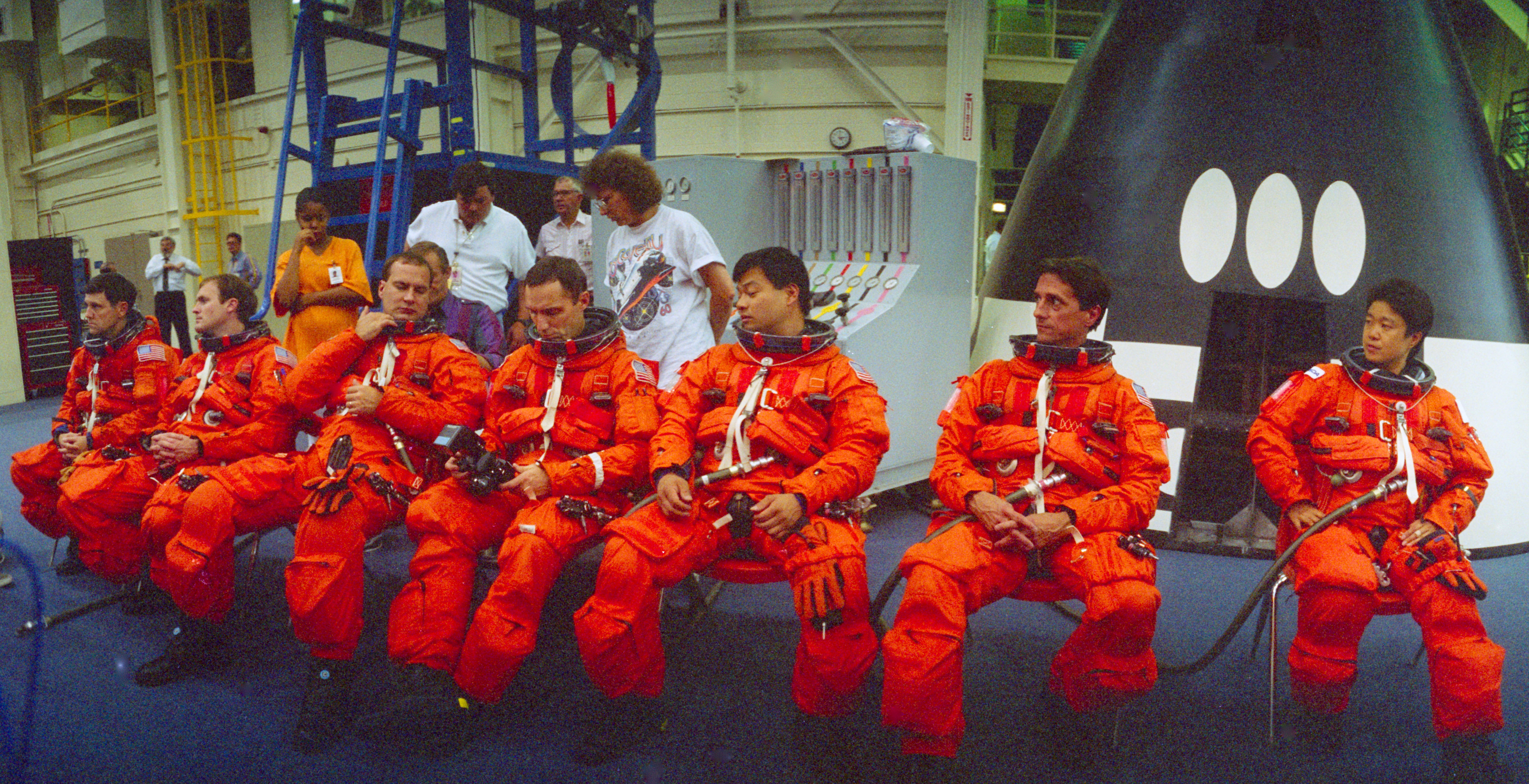

Left: The STS-65 crew during preflight training at NASA’s Johnson Space Center in Houston. Right: Technicians at NASA’s Kennedy Space Center in Florida prepare the Spacelab module for the STS-65 mission.
Columbia returned to NASA’s Kennedy Space Center (KSC) in Florida following its previous flight, STS-62, in March 1994. Technicians in KSC’s Orbiter Processing Facility (OPF) serviced the orbiter, removed the previous payload, and installed the Spacelab module in the payload bay. Following a successful leak check of the Spacelab module, rollover of Columbia from the OPF to the Vehicle Assembly Building (VAB) took place on June 8, where workers mated it with an external tank (ET) and two solid rocket boosters (SRBs). Following integrated testing, the stack rolled out to Launch Pad 39A seven days later. The crew participated in the Terminal Countdown Demonstration Test on June 22.

Liftoff of space shuttle Columbia on STS-65 carrying the second International Microgravity Laboratory.
On July 8, 1994, precisely on time, Columbia thundered off KSC’s Launch Pad 39A to begin the STS-65 mission. For the first time in shuttle history, a video camera recorded the liftoff from the orbiter’s flight deck, showing the vibrations during the first two minutes while the SRBs fired, smoothing out once the shuttle main engines took over. Mounted inside Columbia’s payload bay, the Spacelab 18-foot-long module provided a shirt-sleeve environment for the astronauts to conduct the scientific experiments. As during many Spacelab missions, the STS-65 crew carried out science operations 24-hours a day, divided into two teams – the red shift comprised Cabana, Halsell, Hieb, and Mukai, while Chiao, Thomas, and Walz made up the blue shift.



Left: Still image from video recorded on the shuttle’s flight deck during powered ascent. Middle: James D. Halsell, left, and Carl E. Walz moments after Columbia reached orbit. Right: View of the Spacelab module in the shuttle’s payload bay.
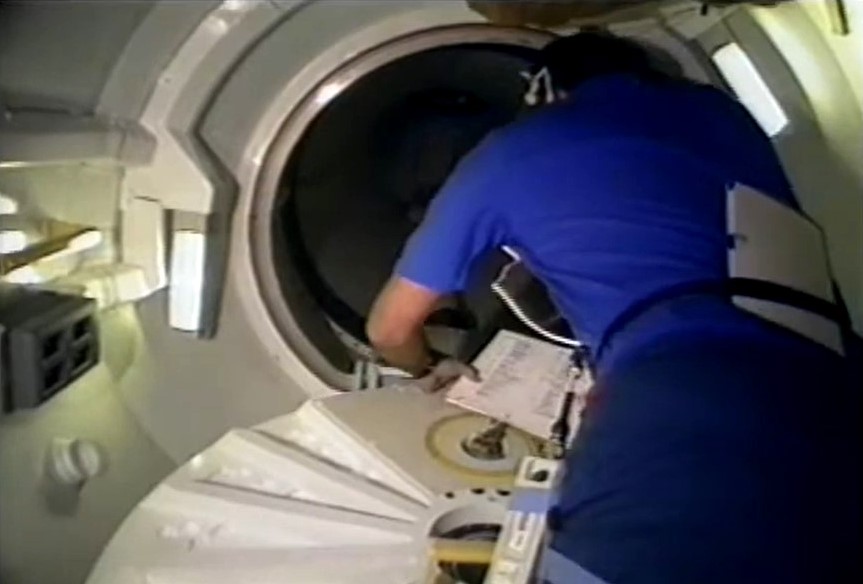


Left: Richard J. Hieb opens the hatch from the airlock to the tunnel leading to the Spacelab module. Middle: Hieb and Chiaki Mukai begin activating Spacelab and its experiments. Right: The view from the tunnel showing astronauts at work in the Spacelab module.
After reaching orbit, the crew opened the payload bay doors and deployed the shuttle’s radiators, and removed their bulky launch and entry suits, stowing them for the remainder of the flight. Shortly after, Hieb opened the hatch to the transfer tunnel and translated through it to enter the Spacelab module for the first time. He and Mukai activated the module and turned on the first experiments. For the next 14 days, the astronauts worked round the clock, with Cabana, Halsell, and Walz managing the shuttle’s systems while Hieb, Chiao, Thomas, and Mukai conducted the bulk of the research. The astronauts commemorated the 25th anniversary of the Apollo 11 launch on July 16 and the Moon landing four days later, recalling that their spacecraft and the Command Module shared the name Columbia.



Left: Chiaki Mukai of the National Space Development Agency of Japan, now the Japan Aerospace Exploration Agency, talks to students in Japan using the shuttle’s amateur radio. Middle: Richard J. Hieb, left, and Robert D. Cabana take an air sample from an experiment. Right: Hieb in the Lower Body Negative Pressure device.
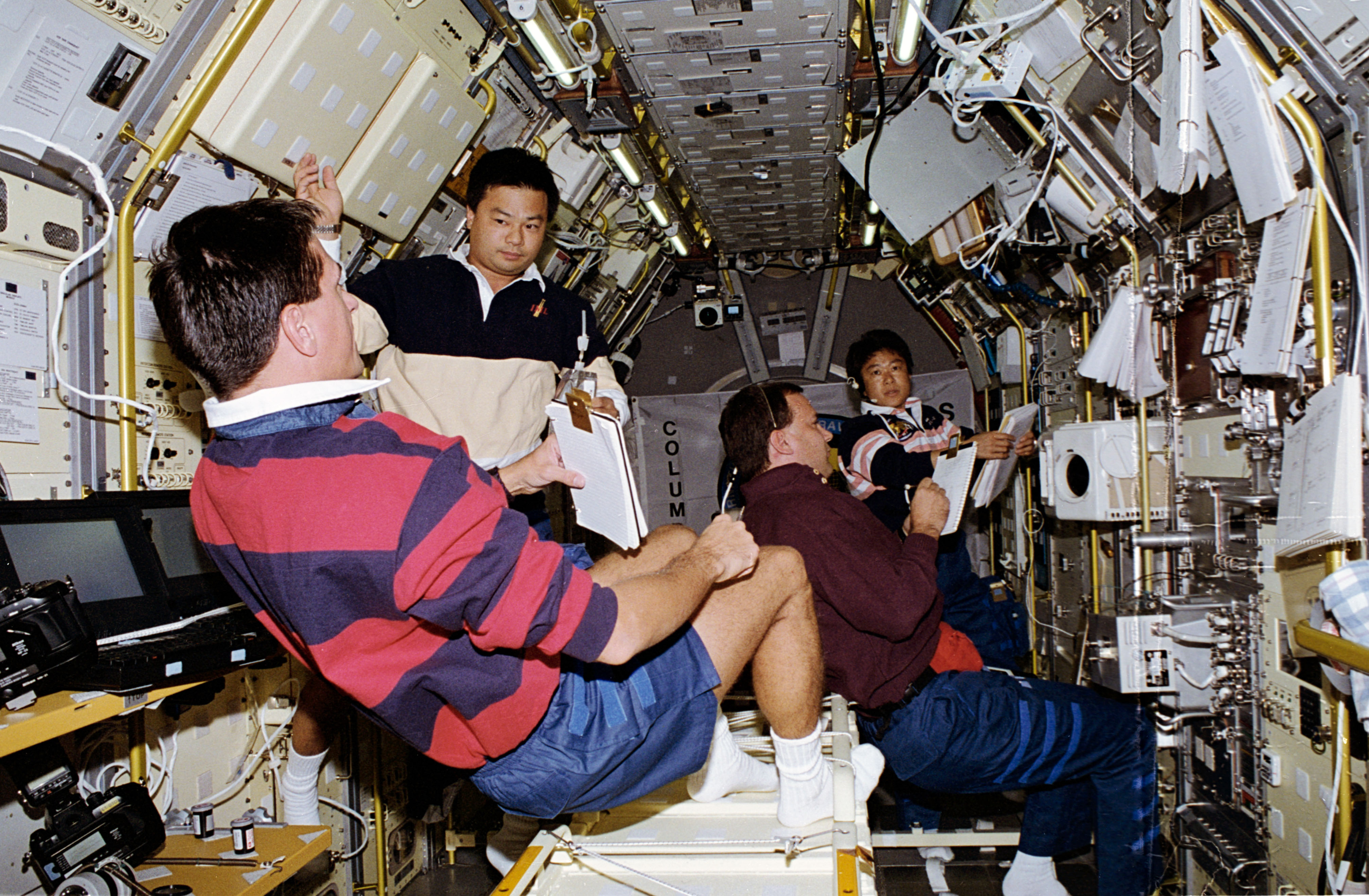

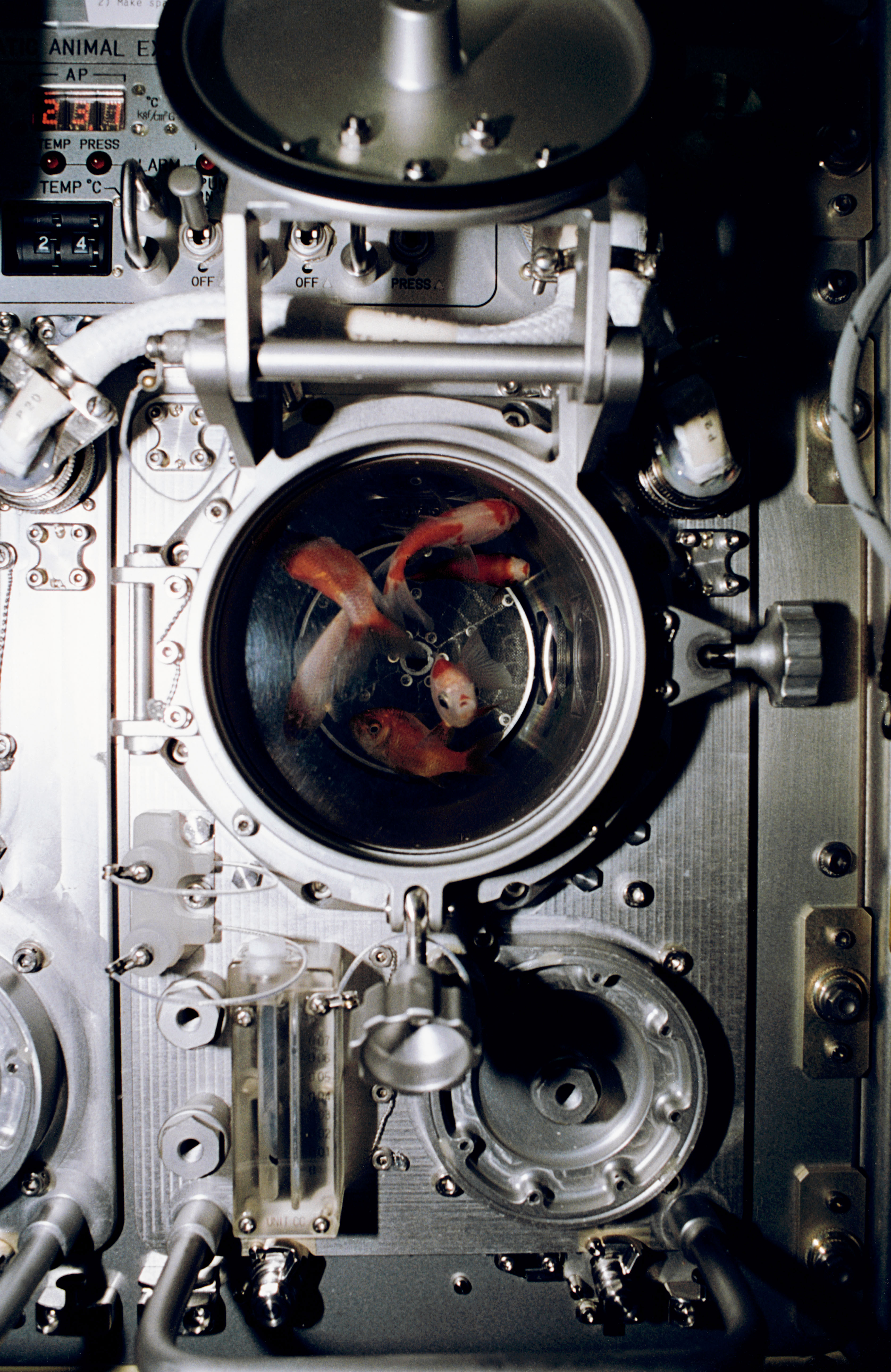
Left: Donald A. Thomas, left, Leroy Chiao, Richard J. Hieb, and Chiaki Mukai at work in the Spacelab module. Middle: Chiao, left, and Thomas work on the Biorack instruments. Right: Goldfish swim in the Aquatic Animal Experiment Unit.



Left: Robert D. Cabana uses the shuttle’s amateur radio. Middle: Leroy Chiao looks out at the Earth. Right: Carl E. Walz working on the shuttle’s flight deck.



Left: Carl E. Walz flies through the Spacelab module. Middle: Donald A. Thomas gives two thumbs up for the crew’s performance during the mission. Right: Thomas, left, Walz, and Leroy Chiao pay tribute to Apollo 11 on the 25th anniversary of the Moon landing mission.

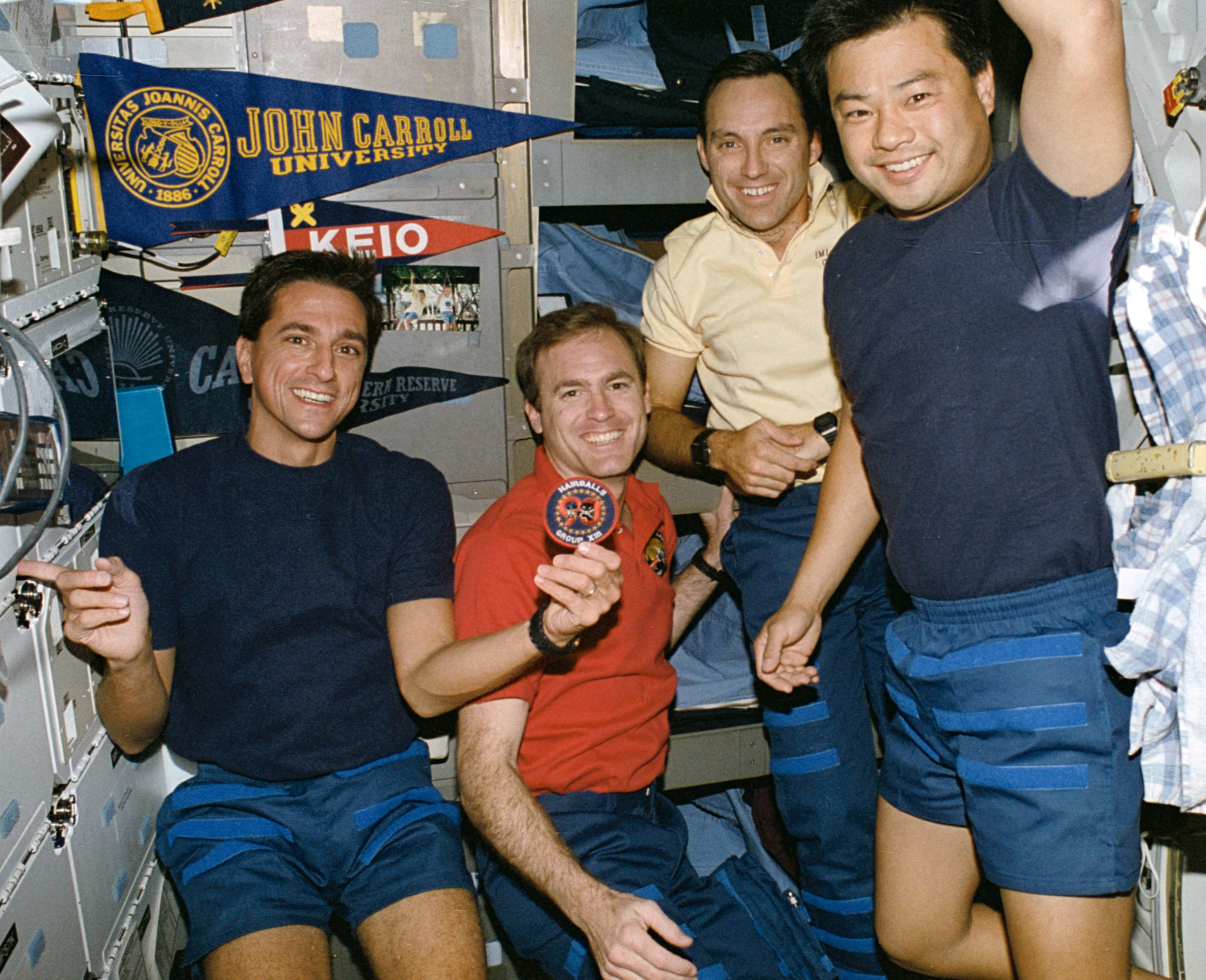

Left: The first time two Asians fly on the shuttle at the same time – Chiaki Mukai, left, of the National Space Development Agency of Japan, now the Japan Aerospace Exploration Agency, left, and NASA astronaut Leroy Chiao. Middle: Donald A. Thomas, left, James D. Halsell, Carl E. Walz, and Chiao, all selected in 1990 as part of astronaut class 13, nicknamed The Hairballs. Right: Inflight photograph of the STS-65 crew.

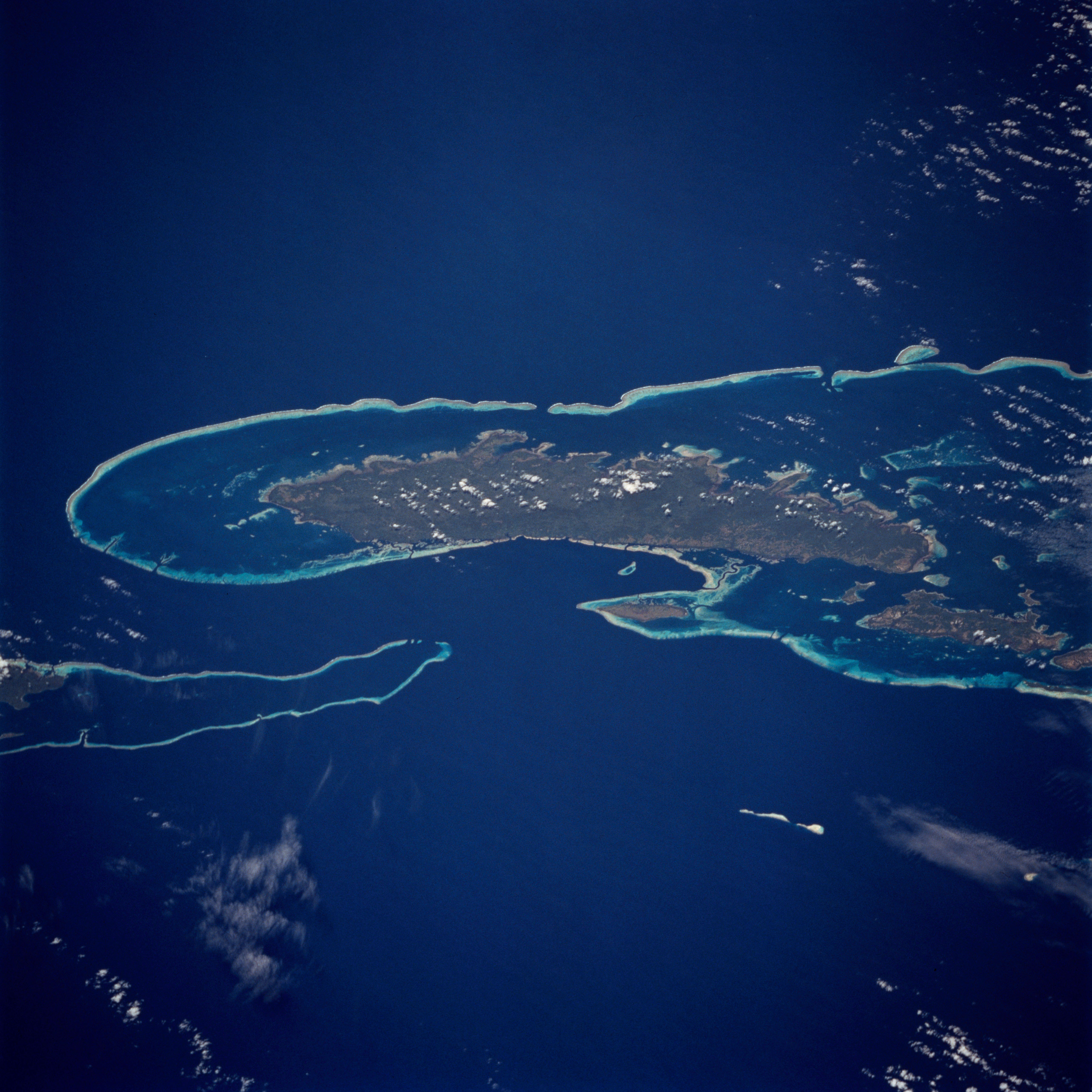

A selection of the STS-65 crew Earth observation photographs. Left: Rio de Janeiro. Middle: Barrier islands in Papua New Guinea. Right: Hurricane Emilia in the central Pacific Ocean.


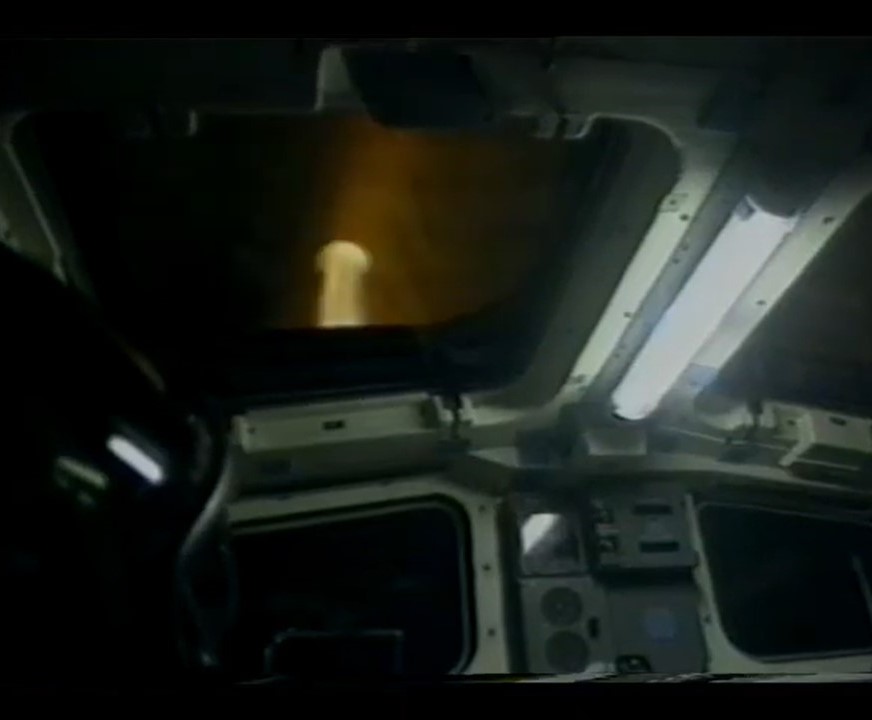
Left: James D. Halsell uses the laptop-based PILOT to train for the entry and landing. Middle: The astronauts close Columbia’s payload bay doors prior to entry. Right: Flash of plasma seen through Columbia’s overhead window during reentry.
At the end of 13 days, the astronauts finished the last of the experiments and deactivated the Spacelab module. Managers waved off the planned landing on July 22 due to cloudy weather at KSC. On July 23, the astronauts closed the hatch to the Spacelab module for the final time, closed Columbia’s payload bay doors, donned their launch and entry suits, and strapped themselves into their seats for entry and landing. Cabana piloted Columbia to a smooth landing on KSC’s Shuttle Landing Facility, completing 236 orbits around the Earth in 14 days, 17 hours, and 55 minutes, at the time the longest shuttle flight. Mukai set a then-record for the longest single flight by a woman. In October 1994, Columbia returned to its manufacturer, Rockwell International in Palmdale, California, for scheduled modification and refurbishment before its next mission, STS-73, in October 1995.

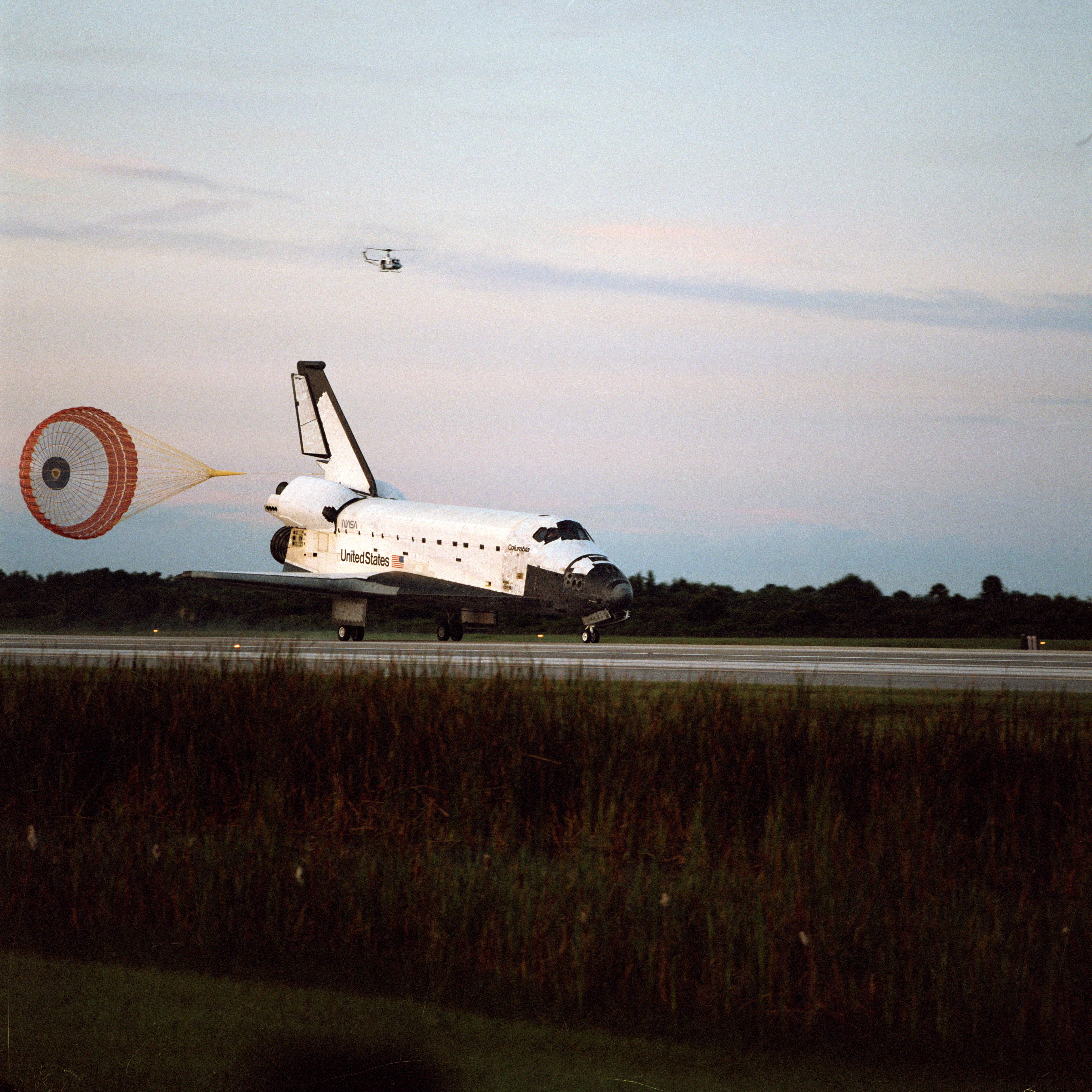

Left: Robert D. Cabana pilots Columbia during the final approach to NASA’s Kennedy Space Center (KSC) in Florida, with the Vehicle Assembly Building visible through the window. Middle: Columbia touches down on KSC’s Shuttle Landing Facility to end the STS-65 mission. Right: Donald A. Thomas, left, and Cabana give a thumbs up after the successful mission.
The two Spacelab modules flew a total of 16 times, the last one during the STS-90 Neurolab mission in April 1998. Visitors can view the module that flew on STS-65 and eight other missions on display at the Stephen F. Udvar-Hazy Center of the Smithsonian Institution’s National Air and Space Museum in Chantilly, Virginia. The other module resides at the Airbus Defence and Space plant in Bremen, Germany, and not accessible to the public.



The Spacelab long module that flew on STS-65 and eight other missions on display at the Stephen F. Udvar-Hazy Center of the Smithsonian Institution’s National Air and Space Museum in Chantilly, Virginia.
Enjoy the crew narrate a video about the STS-65 mission. Read Cabana’s and Chiao’s recollections of the STS-65 mission in their oral histories with the JSC History Office.
What's Your Reaction?



















.jpg?#)


































